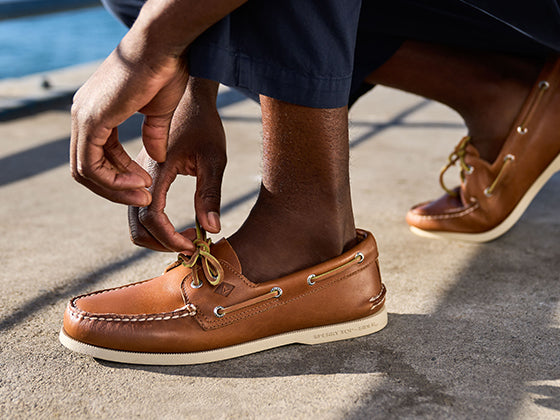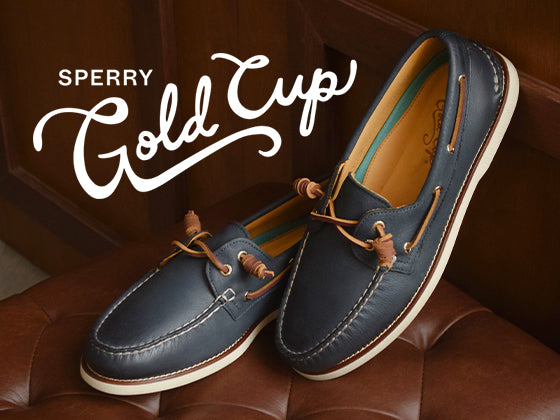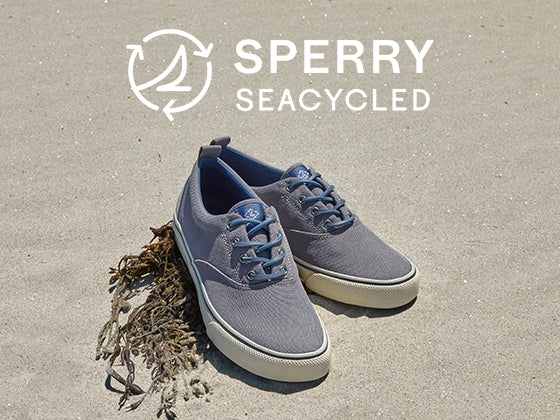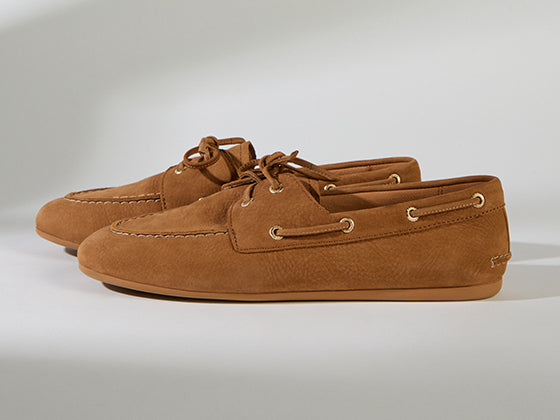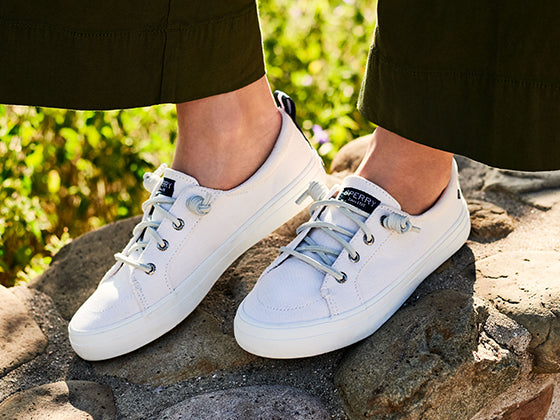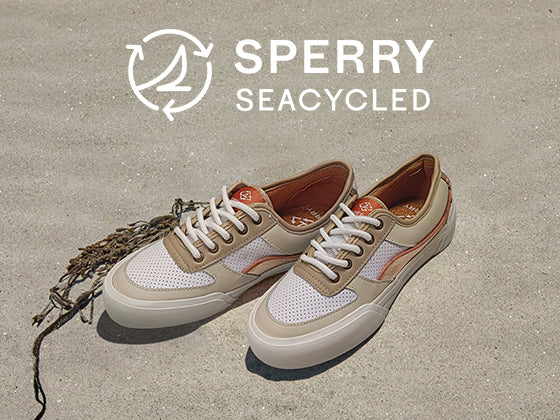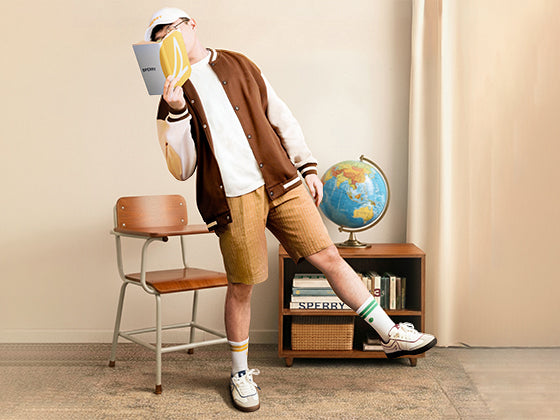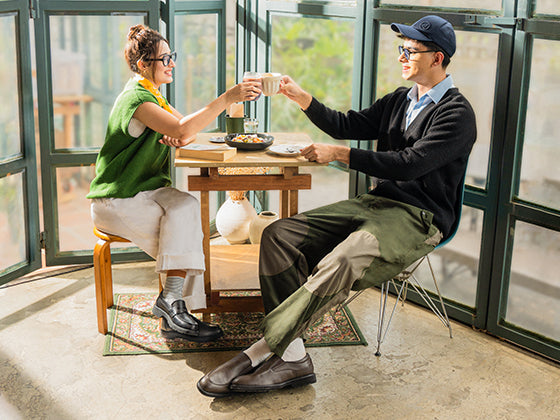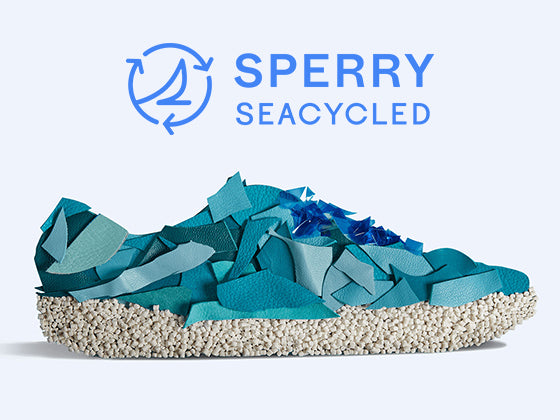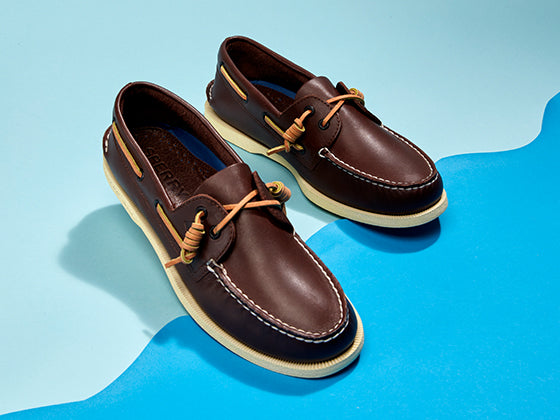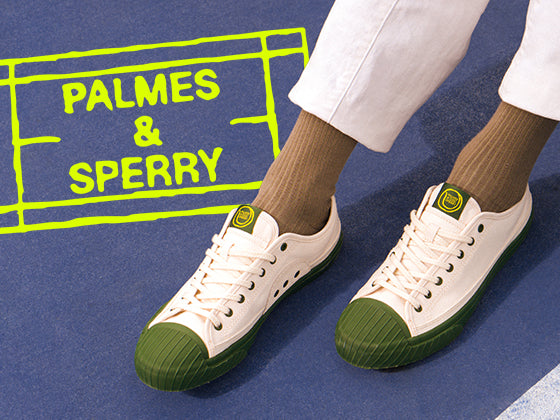Recycled Canvas
Clear plastic bottles and other plastic waste labeled PETE are recycled and used instead of virgin polymers to manufacture polyester yarns. Using recycled plastic reduces the energy needed to make yarns and uses waste instead of new resources. Plastic waste is chopped into small flakes, cleaned, and pelletized. These recycled pellets are melted and extruded into fine fibers, twisted into yarns, and woven into a recycled polyester canvas. On average, it takes the equivalent of 12 recycled plastic bottles* to make 1 pair of shoes. Uppers are made with 100% of recycled polyester; see specific product details for exact materials used.
*Calculations are based on men's size 9, women's size 7 shoes, and 8 grams of plastic per bottle.
Reclaimed Leather
A key tannery partner collects leather scraps, shreds them into leather fibers, and creates a felt-like material which is then combined with a polyurethane (PU) synthetic binder to form a leather fiber substrate. A PU coating is applied to achieve a consistent color and texture. Uppers are made with 52% of recycled leather, with other synthetic materials; see specific product details for exact materials used.
Recycled Rubber
Recycled Devulcanized Rubber
Vulcanization is a heat, pressure, and chemical process through which crude rubber is transformed to improve its durability, stability, and elasticity, making it suitable for outsoles. The bonds created during vulcanizing hinder the material from being reformulated and reused.
Devulcanization reverses the bond-creation process, allowing the rubber to be recycled. The devulcanized rubber is used in new crude rubber formulations. Its shaped or molded into new components and vulcanized once again to create a new outsole.
Outsoles are made with 70% devulcanized recycled rubber; see specific product details for exact materials used.details for exact percentage used.
Recycled Regrind Rubber
Rubber scraps are ground into small particles and used as filler in crude rubber formulations. This recycled filler is not chemically available to form the strongest bonds during vulcanization, so only a limited amount of regrind rubber is used to maintain structural integrity of the material.
Outsoles are made with 3% - 15% of regrind rubber; see specific product details for exact percentage used.
Undyed Naturals
Undyed Naturals The dyeing process involves dissolving dyes and auxiliary chemicals in a water bath large enough for the textile being dyed to be submerged. Water is also used for rinsing the dyed textiles and cleaning out equipment between colors. Wet textiles also require energy for drying.
Undyed materials skip this part of the manufacturing process all together, using fewer chemicals, less water, and less energy and produce less waste. In combination with undyed materials, each style in the Natural Collection uses other recycled materials; see specific product details for exact materials and percentages used.

